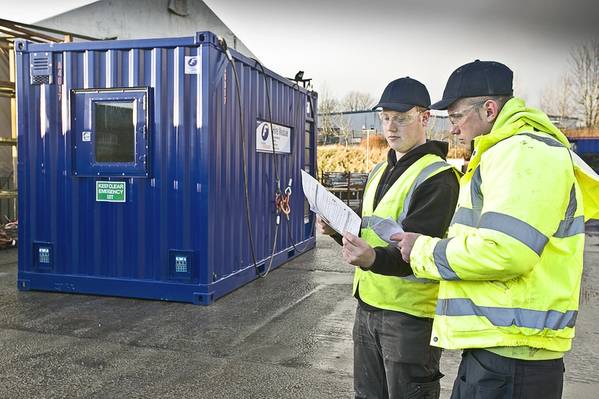
Ferguson Middle East, a global specialists in the provision of offshore DNV 2.7-1 containers, tanks, reefers, engineering workspace and accommodation modules, has introduced a new dual HVAC system to their engineering workspace modules.
The new system has been design engineered to protect offshore workers from the punishing temperatures in the Arabian Gulf. Temperatures can reach upper 40oC or higher during the summer months and high temperatures make for an uncomfortable work environment. Offshore crews need an air-conditioning system that offers a more comfortable and cooler workspace.
In addition to improvements to temperature management, the introduction of a two speed fan improved HVAC unit efficiency by 30 percent, during normal operation, and reduced purge time. When an A60 module becomes de-pressurised, it has to be purged prior to anyone re-entering the module. Purging a module can sometimes take up to an hour, during which time the pressurised module cannot be used. The new HVAC unit has meant a 25 percent reduction to the purge time.
Dr. Julian Poyner, Engineering Director, Ferguson Group, said, “All offshore modules are pressurised and this means that they have cool air pumped through them at a constant rate whenever they are powered up. When you are dealing with a very warm ambient temperature the HVAC has to work a lot harder. Offshore, this can mean that the HVAC unit is under stress for days at a time, with the obvious risk to reliability.”
Each HVAC unit is more powerful than standard units and is operational at up to 50°C (fifty degrees Celsius). The new HVAC unit has been designed to operate over a greater range of temperatures from -20°C to +50°C. Testing over this temperature range was carried out at the Motor Industry Research Institute (MIRA) in Nuneaton, with tests running constantly over a five day period.
Poyner, added, “The unit was put under constant stress during the testing and we were delighted with the results. The unit surpassed what we thought it would be able to achieve, the testing chamber suggested that we test it against the standards laid down in MOD Stan 0035 – 4. We tested the HVAC unit in temperatures of up to 50°C and it was able to support a comfortable ambient temperature for extended periods of time. The results demonstrated that the HVAC unit could work at maximum efficiency for longer duration than previously.”


